As we move forward with plans for the integration of crewed and uncrewed aviation in the national airspace (NAS), different concepts and ideas are created almost daily in an effort to find the best way to present a realistic path to the civil aviation authorities of the world.
One interesting concept is Drone Orchestration in which a single platform will handle drone automation and remote operation in a move resembling an orchestra where the technology acts as a sort of conductor, enabling drone capabilities and coordination in BVLOS operations, autonomous flights, real-time video stream, precision landing, and drone-in-a-box (DIB) integration.
The company that introduced this concept is Syracuse, NY-based VOTIX with a product of the same name that is a cloud-based software as a service (SaaS) solution designed to be drone-agnostic. We had a lengthy conversation with Edwin Sanchez, Chief Executive Officer at VOTIX, who explained the revolutionary concept in detail.
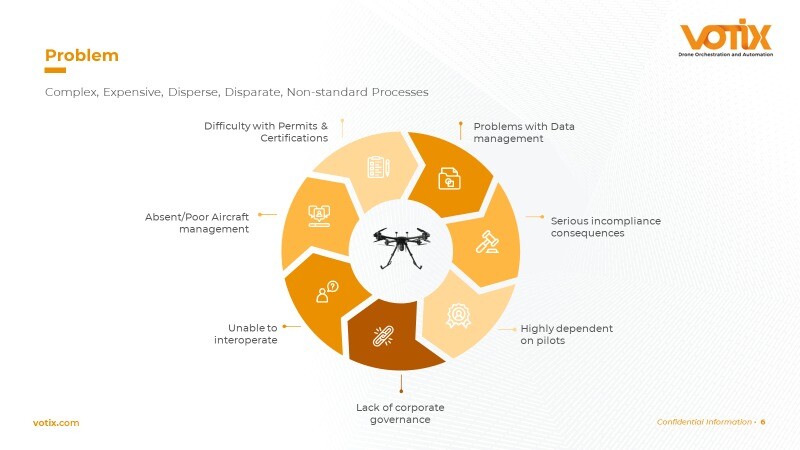 “VOTIX is a complete solution that automates and integrates all aspects of drone operations into a single system so enterprises and agencies can easily perform safe and secure flights at scale,” said Sanchez. “We see the market progressing in three stages in which stage one is one drone, one operation, stage two is one enterprise coordinating all their operations in a single platform and stage three is all these separate operations being orchestrated and coordinated in a central system, which is a great step forward in allowing full integration with crewed aviation.”
“VOTIX is a complete solution that automates and integrates all aspects of drone operations into a single system so enterprises and agencies can easily perform safe and secure flights at scale,” said Sanchez. “We see the market progressing in three stages in which stage one is one drone, one operation, stage two is one enterprise coordinating all their operations in a single platform and stage three is all these separate operations being orchestrated and coordinated in a central system, which is a great step forward in allowing full integration with crewed aviation.”
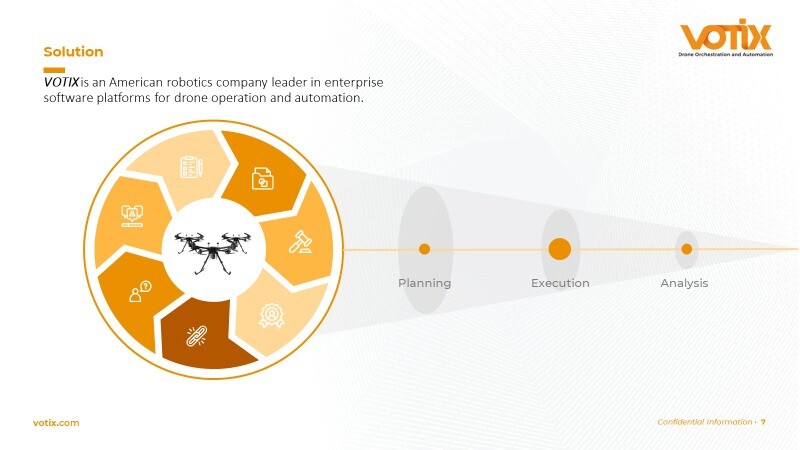 One of the main challenges that uncrewed aviation faces as we near a potential BVLOS regulation from the Federal Aviation Administration (FAA) is the issue of quantity. Once flights beyond the operators’ visual range are authorized, enormous fleets of drones from online vendors such as Amazon.com, Target, Walmart, Walgreens and countless others will take to the skies in a mad race to improve their delivery times and reduce operational costs. How are we going to handle all this traffic, while maintaining an enviable safety record for commercial airliners?
One of the main challenges that uncrewed aviation faces as we near a potential BVLOS regulation from the Federal Aviation Administration (FAA) is the issue of quantity. Once flights beyond the operators’ visual range are authorized, enormous fleets of drones from online vendors such as Amazon.com, Target, Walmart, Walgreens and countless others will take to the skies in a mad race to improve their delivery times and reduce operational costs. How are we going to handle all this traffic, while maintaining an enviable safety record for commercial airliners?
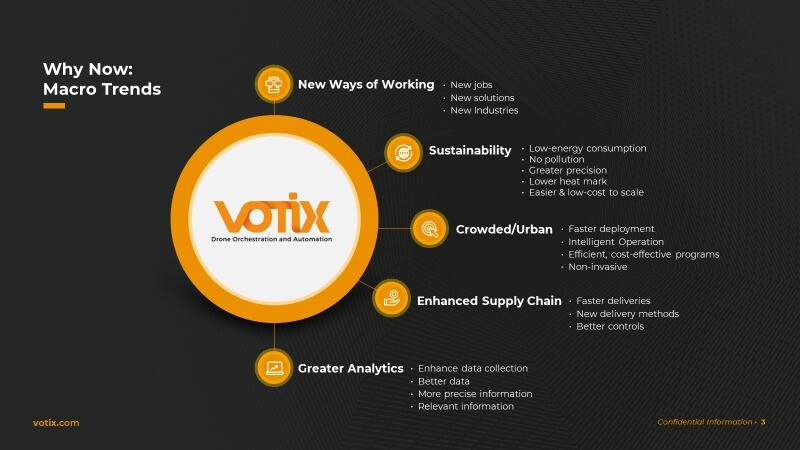 “I believe we have successfully mastered Phase One and have the technological answer for Phase Two, the big challenge to move into Phase Three remains regulation and our ability to test our aeronautical assumptions in a real environment without too much risk,” Sanchez asserted. “One big challenge that we faced from day one was the ability of software to be fully integrated between disparate systems that were not originally designed to work together. What VOTIX does is that it provides a common language for all these different systems to communicate in real-time, allowing for full coordination inside the individual fleet, but also with other adjacent fleets and in harmony with Air Traffic Control (ATC) for crewed aviation.”
“I believe we have successfully mastered Phase One and have the technological answer for Phase Two, the big challenge to move into Phase Three remains regulation and our ability to test our aeronautical assumptions in a real environment without too much risk,” Sanchez asserted. “One big challenge that we faced from day one was the ability of software to be fully integrated between disparate systems that were not originally designed to work together. What VOTIX does is that it provides a common language for all these different systems to communicate in real-time, allowing for full coordination inside the individual fleet, but also with other adjacent fleets and in harmony with Air Traffic Control (ATC) for crewed aviation.”
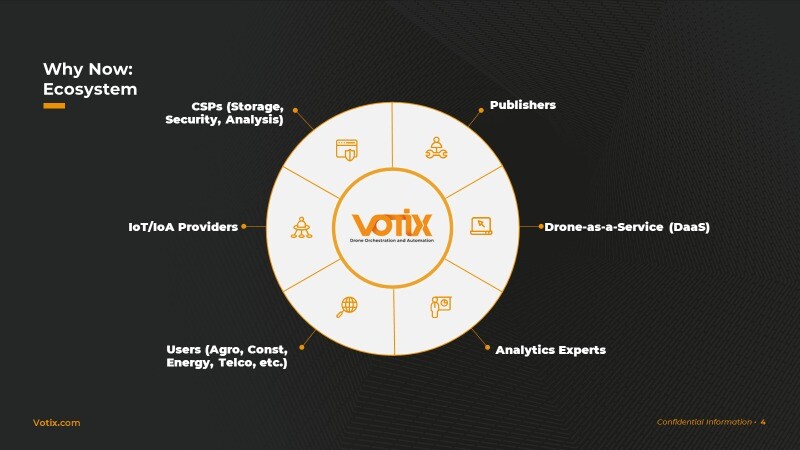 Given that this year of 2023 has seen artificial intelligence (AI) take center stage through the availability of tools such as ChatGPT and many others, it is only logical to think that any attempt at automating coordination between fast moving vehicles in three dimensions will involve this valuable new resource.
Given that this year of 2023 has seen artificial intelligence (AI) take center stage through the availability of tools such as ChatGPT and many others, it is only logical to think that any attempt at automating coordination between fast moving vehicles in three dimensions will involve this valuable new resource.
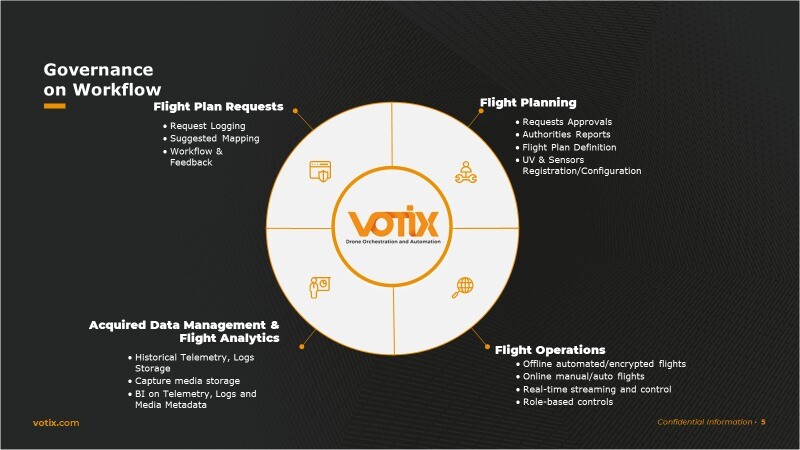 “Yes, of course we are looking at AI to help with the orchestration of these non-piloted aircraft and are using a tool that we call ‘Video Intelligence’ that uses our unique capacity to stream video using complex compression whenever required,” Sanchez said. “Only by using every single tool in the toolbox will we be able to add uncrewed aircraft to the NAS, that’s why we have developed a cloud platform that works in coordination with a VOTIX CONTROL (VXC) mobile app and, if needed, the VOTIX GATEWAY (VXG), allowing any drone to be operated via WiFi or cellular connectivity. VOTIX GATEWAY (VXG) is a small, lightweight optional device with computing power for smart piloting and AI and a built-in connectivity stack, including 5G/LTE/4G/WiFi Starlink, that enables automatic real-time data transmission from any drone to the cloud.”
“Yes, of course we are looking at AI to help with the orchestration of these non-piloted aircraft and are using a tool that we call ‘Video Intelligence’ that uses our unique capacity to stream video using complex compression whenever required,” Sanchez said. “Only by using every single tool in the toolbox will we be able to add uncrewed aircraft to the NAS, that’s why we have developed a cloud platform that works in coordination with a VOTIX CONTROL (VXC) mobile app and, if needed, the VOTIX GATEWAY (VXG), allowing any drone to be operated via WiFi or cellular connectivity. VOTIX GATEWAY (VXG) is a small, lightweight optional device with computing power for smart piloting and AI and a built-in connectivity stack, including 5G/LTE/4G/WiFi Starlink, that enables automatic real-time data transmission from any drone to the cloud.”
All these tools are included in VOTIX FLY, a platform for hardware-agnostic drone remote operations. It is designed to handle drones over the Internet from anywhere with full command and control (C2) and ultra-low latency HD video streaming.
“The idea was from the beginning to be drone-agnostic, so VOTIX FLY was designed to support any drone manufacturer and to operate multiple automated or manual missions with full drone and payload control,” Sanchez said, “VOTIX FLY allows real-time integration with drone ecosystems such as DIB, UTM and detect and avoid (DAA) systems, and uses artificial intelligence to enhance drone capabilities with visual intelligence and precision landing.”
Even though we are still a year away from an FAA notice of proposed Rule Making (NPRM) for BVLOS flights in the NAS, and possibly two or more from the first integrated flights, it is good to know that companies such as VOTIX are working in unorthodox ways to help achieving full integration of crewed and uncrewed aviation as soon as we have supporting regulation.


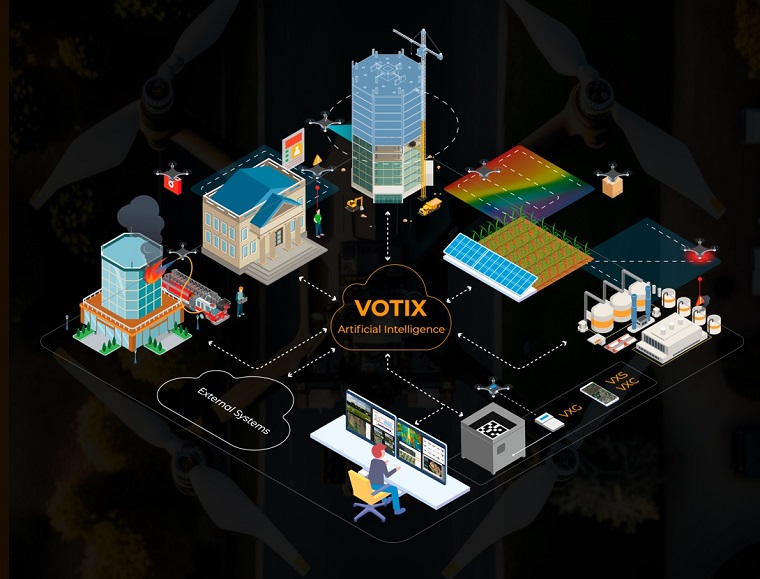












Comments